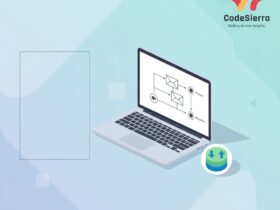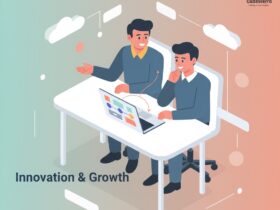A concise guide to the top Salesforce CRM trends shaping 2025 — from Agentforce and Einstein AI to Data Cloud, Net Zero, blockchain, and AR/VR. Learn real-world examples, benefits, and practical next steps for admins and architects.
Overview
Salesforce continues to push CRM innovation in 2025, blending AI, data platforms, sustainability, and immersive experiences to help organizations deliver highly personalized and secure customer engagement. This post breaks down the top 10 trends, explains real-world use cases, and suggests where to focus if you manage or build on Salesforce.
Top 10 Trends — What they are and why they matter
1. Agentic AI with Agentforce: Autonomous customer engagement
Agentforce enables AI agents to perform multi-step tasks autonomously — searching data, triggering flows, and making decisions. Use case: financial services automate loan pre-qualification and recommendations, cutting response times from days to minutes.
2. Hyper-personalization with Einstein AI
Einstein’s predictive and generative capabilities power targeted outreach and content personalization at scale. E‑commerce teams can boost CTR and conversions by delivering individualized product offers and dynamic messaging.
3. Data Cloud for unified customer insights
Data Cloud unifies structured and unstructured data in real time to provide a single customer view across sales, service, marketing, and commerce. Hospitality and retail implementations benefit from better context at the point of engagement.
4. Sustainability with Net Zero Cloud
Net Zero Cloud helps track emissions and automate ESG reporting. Manufacturing and operations teams can identify high-emission processes and target reductions while meeting regulatory requirements.
5. Blockchain for enhanced data security
Blockchain integrations create tamper-proof records for sensitive data sharing in regulated industries — reducing breach risk and improving trust across partners.
6. Hyperforce: Scalable, global infrastructure
Hyperforce offers region-aware deployment and scalability, making it easier for global organizations to meet data residency and performance needs.
7. Social media integration for omnichannel engagement
Deeper integrations with social platforms enable real-time sentiment monitoring and automated responses, improving brand responsiveness and marketing alignment.
8. Industry-specific clouds (verticalization)
Vertical clouds (Financial Services, Health, Consumer Goods, etc.) deliver pre-built compliance, workflows, and data models — accelerating time-to-value for industry teams.
9. Self-service enhancements with Service Cloud
AI-driven chatbots, knowledge bases, and customer portals reduce support costs and empower customers to resolve issues quickly, lowering ticket volumes and improving satisfaction.
10. AR/VR integration for immersive experiences
AR/VR use cases — virtual product demos, property walkthroughs, and interactive training — provide immersive engagement that increases conversion and customer understanding.
Practical takeaways & next steps
- Start small with pilot projects for Agentforce and Einstein personalization to measure impact quickly.
- Invest in Data Cloud and identity/data governance before aggregating cross-system data.
- Use Net Zero and blockchain where compliance or customer trust is a priority.
- Leverage vertical clouds to shorten implementation cycles for regulated industries.
- Measure success with clear KPIs: response times, conversion lift, ticket deflection, and sustainability metrics.
Why this matters for Salesforce teams
For admins, developers, and architects, these trends signal where technical debt should be managed and where to prioritize training and platform investments. Business users and leaders gain more actionable insights and automation to deliver personalized customer journeys while meeting compliance and sustainability goals.
Ready to explore how these trends can improve your Salesforce org? Contact us to discuss pilots, architecture, and roadmap alignment.










Leave a Reply